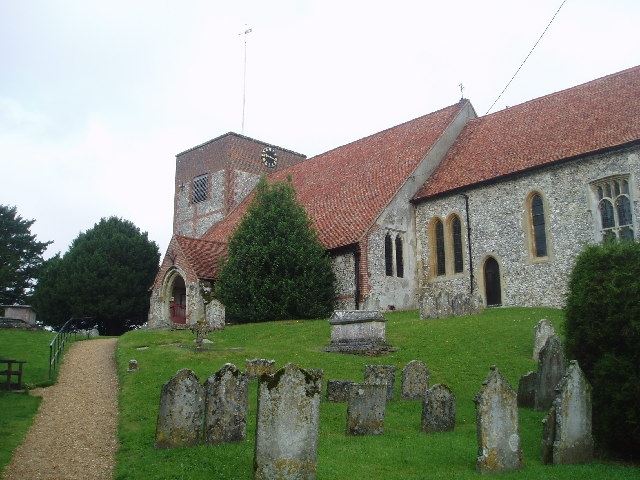
One of the interesting churches in Hampshire, England; Cheriton church stands on a hill that is in fact a prehistoric burial mound. Cheriton village was caught up in the English Civil War "Battle of Cheriton". As the mist cleared on the morning of the 29th of March 1644, the Civil War ‘Battle of Cheriton’ began. Thousands of Royalist and Parliamentarian soldiers became locked in combat in the fields to the east of the small Hampshire village. The brutal skirmish lasted all day, and by sunset around 2,000 men lay dead on the battlefield. Ironically, some of the dead were buried in the village churchyard, probably in a communal grave.
Why should this be ironic? The church of St. Michael and All Angels stands on a hill that is in fact a prehistoric burial mound. History records that a settlement had existed in the area long before the church was ever built, and the burial mound is the last resting place for those who had died of natural causes, such as old age, and probably for those killed during inter-tribal conflict.
Therein lays the irony. The earliest parts of Cheriton church, such as the porch with its plain Norman pillars on either side of the doorway, date from the 12th century when the grandson of William the Conqueror, Henry de Blois, was Bishop of Winchester between 1129 and 1171.
A long-standing mystery surrounds the porch that has baffled historical experts for generations. It concerns two curious mouldings. On either side of the doorway is a triangle made from six outer circles and three inner circles. This pattern on the stonework of the wall may well be unique to Cheriton church. Also on the porch wall is a Norman scratch or mass dial; the outwardly radiating lines of which would have signified the times of the masses. The small centre hole shows where a gnomon (or short metal rod) was inserted to cast a shadow from the sun, working in much the same way as a sundial does.
St. Michael’s contains a number of other interesting 13th century artefacts. In the south wall is a small priest’s door. On the same wall inside is a piscina for holy water and throughout the church are a number of window mouldings all from the same century. Near the altar are a number of 13th century tiles believed to be of Flemish origin; one presents the head of ‘Our Lord’ and is unique in design to Cheriton church, another displays the head of the ‘Blessed Virgin Mary’ while a third is Dutch in origin with a dated inscription ‘1250-1300’. The reason for the inscription is still a mystery.
Now, onto the multi.
At the headline co-ordinates you'll find Lewis Harfield, on a bench. Label the dates ABCD-EFGH
To find the final, substitute your numbers into the following formula
N51 03.(A+E)C(H-D) W001 10.(A+E)(G/4)(F-G)
If anybody would like to expand to this series please do, I would just ask that you could let Sadexploration know first so he can keep track of the Church numbers and names to avoid duplication
To view the church micro stats page, please click here